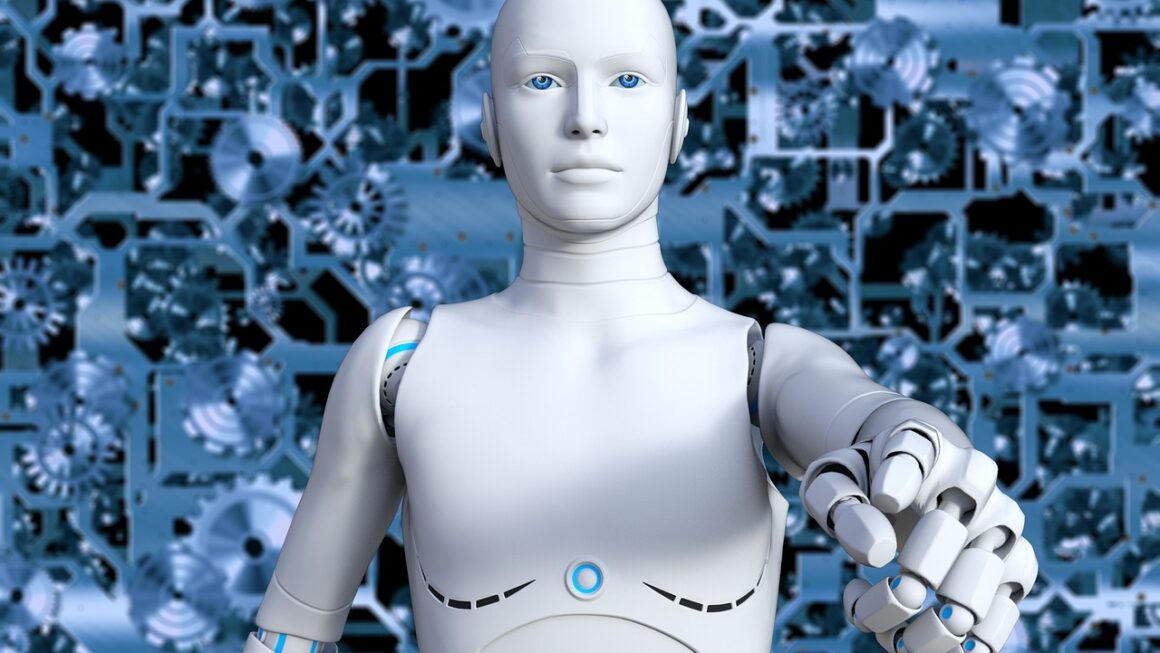Deep learning, a transformative subset of artificial intelligence, is reshaping industries and driving innovation at an unprecedented pace. From self-driving cars that navigate complex road scenarios to personalized medical diagnoses powered by intricate algorithms, the power of deep learning is undeniable. This blog post delves into the core concepts, applications, and future trends of deep learning, providing you with a comprehensive understanding of this groundbreaking technology.
What is Deep Learning?
Deep Learning Defined
Deep learning is a type of machine learning that utilizes artificial neural networks with multiple layers (hence “deep”) to analyze data with increasing levels of abstraction. Unlike traditional machine learning algorithms that require hand-engineered features, deep learning algorithms can automatically learn features directly from raw data. This capability makes deep learning exceptionally powerful for complex tasks like image recognition, natural language processing, and speech recognition.
- Key Features:
Automatic Feature Extraction: Learns relevant features from data without explicit programming.
Hierarchical Learning: Builds complex representations through multiple layers of abstraction.
Adaptability: Can be trained on vast amounts of data to achieve high accuracy.
Scalability: Can handle complex problems with high dimensionality.
Neural Networks: The Building Blocks
At the heart of deep learning are neural networks, inspired by the structure of the human brain. These networks consist of interconnected nodes (neurons) arranged in layers.
- Input Layer: Receives the initial data.
- Hidden Layers: Perform complex computations and feature extraction.
- Output Layer: Produces the final result or prediction.
Each connection between neurons has a weight, and each neuron has a bias. During training, these weights and biases are adjusted to minimize the difference between the network’s output and the desired output. This process is called backpropagation.
Deep Learning vs. Machine Learning
While deep learning is a subset of machine learning, there are crucial distinctions:
- Feature Engineering: Traditional machine learning often requires manual feature engineering, where domain experts identify and extract relevant features from the data. Deep learning automates this process.
- Data Requirements: Deep learning algorithms typically require much larger datasets to achieve optimal performance compared to traditional machine learning algorithms.
- Computational Power: Deep learning models are computationally intensive and often require specialized hardware like GPUs (Graphics Processing Units) for training.
- Complexity: Deep learning models are inherently more complex and can be more difficult to interpret compared to traditional machine learning models.
Applications of Deep Learning
Deep learning is transforming a wide array of industries, enabling innovative solutions and improving existing processes.
Image Recognition and Computer Vision
Deep learning has revolutionized image recognition and computer vision. Convolutional Neural Networks (CNNs) are the primary architecture used in this domain.
- Examples:
Object Detection: Identifying and locating objects within an image (e.g., detecting cars, pedestrians, and traffic lights in self-driving cars).
Image Classification: Categorizing images based on their content (e.g., classifying images of animals into different species).
Facial Recognition: Identifying individuals based on their facial features (e.g., unlocking smartphones, security surveillance).
Medical Image Analysis: Assisting doctors in diagnosing diseases from medical images like X-rays and MRIs.
Natural Language Processing (NLP)
Deep learning has made significant strides in NLP, enabling machines to understand and generate human language. Recurrent Neural Networks (RNNs) and Transformers are commonly used architectures.
- Examples:
Machine Translation: Automatically translating text from one language to another (e.g., Google Translate).
Sentiment Analysis: Determining the emotional tone of text (e.g., analyzing customer reviews).
Chatbots and Virtual Assistants: Creating conversational agents that can interact with users (e.g., Siri, Alexa).
Text Summarization: Generating concise summaries of longer texts.
Question Answering: Providing answers to questions posed in natural language.
Speech Recognition
Deep learning has significantly improved the accuracy and robustness of speech recognition systems.
- Examples:
Voice Assistants: Transcribing spoken commands and queries (e.g., interacting with voice-activated devices).
Automatic Transcription: Converting audio recordings into text.
Voice Biometrics: Identifying individuals based on their voice characteristics.
Recommender Systems
Deep learning algorithms are used to personalize recommendations in e-commerce, entertainment, and other domains.
- Examples:
Product Recommendations: Suggesting products that users might be interested in based on their past purchases and browsing history (e.g., Amazon’s product recommendations).
Movie and Music Recommendations: Recommending movies and music based on user preferences (e.g., Netflix’s movie recommendations, Spotify’s music playlists).
Key Deep Learning Architectures
Several deep learning architectures have emerged as fundamental building blocks for various applications.
Convolutional Neural Networks (CNNs)
CNNs are particularly well-suited for image recognition and computer vision tasks. They use convolutional layers to extract features from images by applying filters that detect patterns.
- Key Components:
Convolutional Layers: Apply filters to extract features.
Pooling Layers: Reduce the spatial dimensions of the feature maps.
Activation Functions: Introduce non-linearity.
Fully Connected Layers: Classify the extracted features.
Recurrent Neural Networks (RNNs)
RNNs are designed to process sequential data, such as text and time series. They have a “memory” that allows them to retain information about past inputs.
- Key Types:
Simple RNNs: Basic recurrent networks with a single hidden state.
Long Short-Term Memory (LSTM): Addresses the vanishing gradient problem in RNNs and can learn long-range dependencies.
Gated Recurrent Units (GRU): A simplified version of LSTM with fewer parameters.
Transformers
Transformers are a relatively new architecture that has achieved state-of-the-art results in NLP tasks. They rely on self-attention mechanisms to weigh the importance of different parts of the input sequence.
- Key Features:
Self-Attention: Allows the model to focus on relevant parts of the input sequence.
Parallelization: Can process the input sequence in parallel, making it faster than RNNs.
Pre-training: Can be pre-trained on large amounts of text data and then fine-tuned for specific tasks.
Generative Adversarial Networks (GANs)
GANs are used for generating new data that resembles the training data. They consist of two networks: a generator that creates new data and a discriminator that tries to distinguish between real and generated data.
- Applications:
Image Generation: Creating realistic images of various objects and scenes.
Data Augmentation: Generating synthetic data to augment training datasets.
Style Transfer: Transferring the style of one image to another.
Training Deep Learning Models
Training deep learning models requires careful consideration of various factors.
Data Preparation
Data quality and quantity are crucial for the success of deep learning models.
- Steps:
Data Collection: Gathering relevant data from various sources.
Data Cleaning: Removing errors and inconsistencies from the data.
Data Preprocessing: Transforming the data into a suitable format for training (e.g., normalization, standardization).
Data Augmentation: Increasing the size of the training dataset by generating synthetic data.
Model Selection and Architecture
Choosing the right model architecture is essential for achieving optimal performance.
- Considerations:
Task Requirements: Select an architecture that is well-suited for the specific task.
Data Characteristics: Consider the size and type of data available.
Computational Resources: Choose an architecture that can be trained with the available resources.
Optimization Algorithms
Optimization algorithms are used to adjust the model’s parameters during training.
- Common Algorithms:
Stochastic Gradient Descent (SGD): A basic optimization algorithm that updates the parameters based on the gradient of the loss function.
Adam: An adaptive optimization algorithm that adjusts the learning rate for each parameter.
RMSprop: Another adaptive optimization algorithm that is similar to Adam.
Hyperparameter Tuning
Hyperparameters are parameters that are not learned during training and must be set manually.
- Examples:
Learning Rate: Controls the step size during optimization.
Batch Size: Determines the number of samples used in each iteration.
Number of Layers: Specifies the depth of the neural network.
Number of Neurons per Layer: Specifies the width of each layer.
Regularization Techniques
Regularization techniques are used to prevent overfitting, which occurs when the model learns the training data too well and performs poorly on unseen data.
- Examples:
L1 and L2 Regularization: Add penalties to the loss function based on the magnitude of the model’s parameters.
Dropout: Randomly drops out neurons during training to prevent them from co-adapting.
Early Stopping: Stops training when the model’s performance on a validation set starts to degrade.
Conclusion
Deep learning has emerged as a powerful tool for solving complex problems across various domains. Its ability to automatically learn features from data and handle high-dimensional data makes it a game-changer in artificial intelligence. While deep learning models require significant computational resources and expertise to train effectively, the potential benefits are immense. As research continues and new architectures and techniques emerge, deep learning will undoubtedly continue to shape the future of technology and innovation. The key takeaway is to understand the core concepts, identify suitable applications for your needs, and leverage the available tools and resources to harness the power of deep learning.




